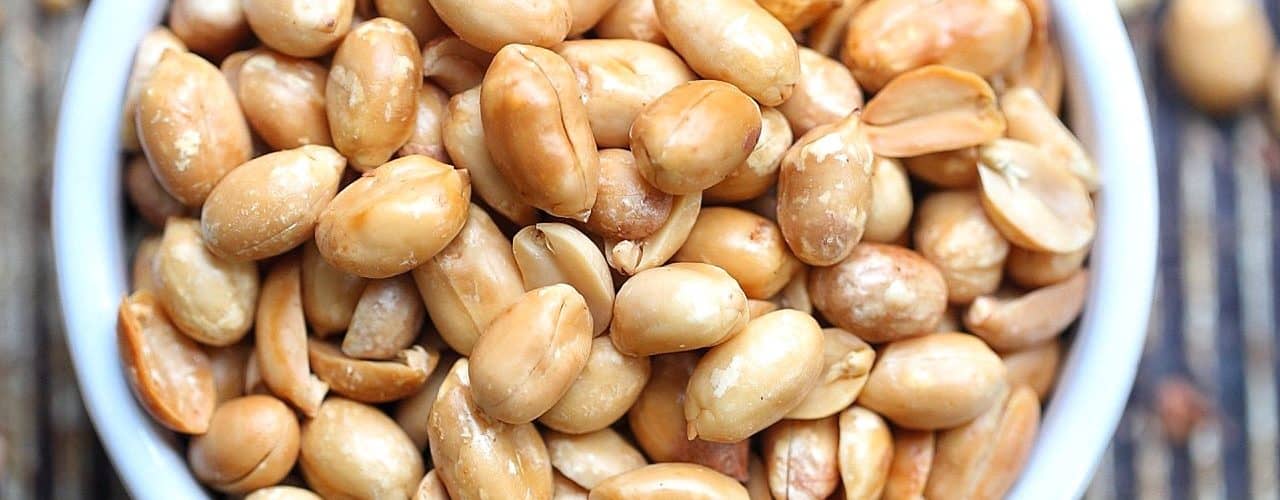A legume, peanuts grow beneath the ground, unlike most other nuts. Peanuts contain no cholesterol and are an easily digestible food source. They make a nutritious powerhouse of a food, being packed full of protein and fiber. Just like olive oil, peanuts contain a large amount of monounsaturated fats that are known for their health benefits as they contain antioxidants. There are hundreds of ways to prepare peanuts, making them an extremely versatile menu item. Peanuts are oven roasted in order to enhance their flavors and this process prepares them for other recipes as well. Roasted peanuts are delightful eaten on their own or in trail mixes, or they can be chopped up or blended to use with soups, salads, desserts, or butters. Also salt, chili powder, garlic powder, cocoa, sugar, cinnamon, or almost any other flavor can be added to the mild flavor of roasted peanuts to make an exciting treat.
Contents
Roasting Ingredients
- 2 pounds of raw peanuts in their shell
- 2 tablespoons of peanut oil
- 1 to 2 tablespoons of salt
Choosing the Peanut
First choose what kind of peanut will be roasted. There are three varieties of peanuts that are delicious when roasted, and each type has a superior value in taste and performance in conjunction to the final product of the roasting process. If the roasted peanuts will be eaten out of the shell, use Virginia or Valencia peanuts. Virginia peanuts are world famous, over-sized nuts that have two nuts per shell. With a crunchy bite, Virginia peanuts are optimal for roasting and snacking. Valencia peanuts are typically smaller in size with three nuts to each shell, but are sweeter in taste making them great for desserts. For roasting peanuts that will be used to make peanut butter, use Spanish peanuts. This variety of peanut has a higher oil content allowing it to be more malleable for nut butter.
Only roast peanuts that have the shells intact, without any holes or cracks. Look for signs of insect infestations, rotten or moldy peanuts. Discard any peanuts that do not look fresh.
Preparing the Peanut
The second step is to clean the peanuts. With the shells still intact, rinse the peanuts under cool water to remove excess dirt using a colander. Pat the peanuts dry with a kitchen towel and place in a large bowl. Add the peanut oil and salt, and mix the peanuts around until they are evenly coated. If desired, add a teaspoon of garlic salt, chili powder, onion powder, cinnamon, sugar, or any other spice to the mix. Experiment with a unique flavor combination to suit the mood of the peanut enthusiast.
The Roasting Process
The third step starts by preheating the oven to 350 degrees Fahrenheit. Then using two cookie sheets, divide the peanuts between the two so that they are in a single layer. Roast them in the oven for thirty to thirty-five minutes, while rotating the pans during the middle of the process so that they are evenly roasted.
Eating and Storing
After the peanuts have roasted, remove and let cool before eating or handling them. They will keep on cooking in the shells, leaving them crispy and crunchy so leave the pans filled with peanuts out in the open air until they cool completely.
If the peanuts will be used for making nut butter, crack open their shells and remove the nuts. Using a salad spinner place the shelled peanuts inside and rub the nuts to loosen the skins. After the skins have been broken off, spin the container in order to separate the peanuts from the skins.
Roasted peanuts are wonderful eaten right out of the shell. Just crack the shell and pop them in the mouth for a savory snack. Store uneaten roasted peanuts in a burlap sack or paper bag in a dark, cool pantry, and they should keep for about one year. Once the roasted nuts are shelled, they will not last as long and will become rancid, so keep this in mind if using for cooking purposes.
References:
About.com: How to Roast Peanuts
Related Posts
<>



